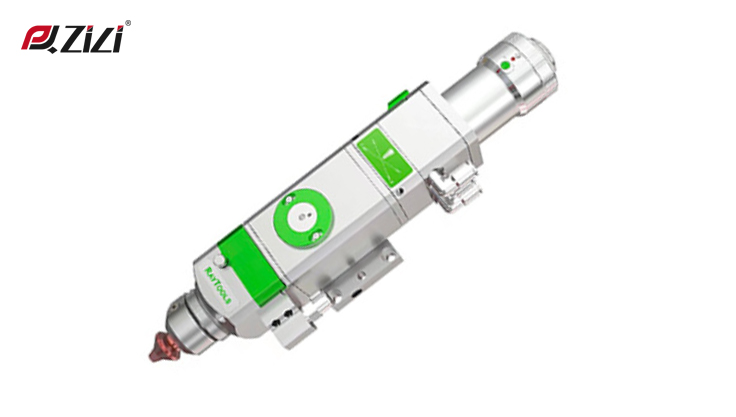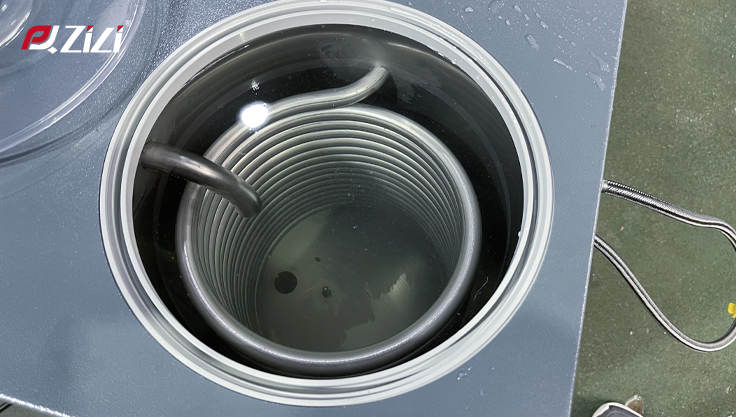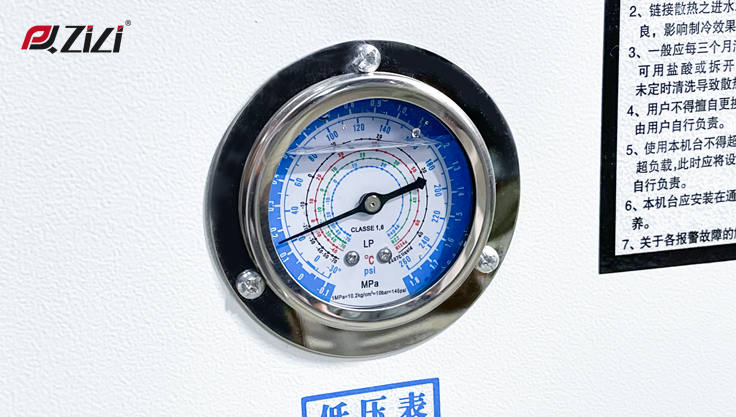The laser chiller is also a type of industrial chiller produced by Pengqiang. The laser chiller has a small number of units and is easy to move and store. The specific introduction to the laser chiller has been written before. You can click on the link to view it.

Laser chiller is a cooling system for laser equipment. Its main function is to maintain the appropriate temperature of laser and other equipment during operation to prevent overheating and ensure the normal operation of the equipment. The following are the specific functions of laser chillers:
Cool the laser source: Lasers generate a lot of heat when working. The laser chiller maintains the temperature of the laser within an appropriate range through flowing cooling water or other cooling media to prevent overheating from damaging the laser.
Stable laser output: Temperature stability is crucial to the output stability of the laser. Laser chillers help maintain the stability of laser output by maintaining the temperature of the laser source, ensuring that laser performance is not affected by temperature fluctuations.

Extend the life of equipment: Excessive heat may cause damage to equipment such as lasers and reduce their life. The purpose of a laser chiller is to extend the life of lasers and other related equipment and reduce thermal stress through effective cooling.
Protect Optical Components: Laser systems often contain various optical components such as lenses and mirrors. Excessive heat can cause these components to expand, deform, or be damaged, and the cooling effect of a laser chiller can help protect these critical optical components.

In general, laser chillers play a vital role in lasers and other laser equipment, ensuring that the equipment maintains the appropriate temperature when working and improving the stability, life and performance of the equipment.
Pengqiang laser chiller is a cooling machine developed for the laser industry. We have introduced many precautions for ordinary industrial chillers before, so today we will talk about laser cooling system troubleshooting in detail.
Laser cooling system is a technology used to reduce the temperature of equipment such as lasers. It usually includes cooling media, pump systems, sensors and control systems. If the laser cooling system fails, it can cause the device to overheat, reduce performance or even damage the device. Here are some possible troubleshooting steps:
Check the coolant level: Make sure the coolant level in the cooling system is adequate. Low fluid levels can result in poor cooling, resulting in overheating.
Check coolant flow: Make sure coolant is flowing properly through the system. Check pumps, pipes and cooling units for blockages or leaks.

Clean the Cooler: If there is dust or dirt on the cooler or radiator, clean them to ensure good cooling.
Check pump operation: Make sure the pumps in the cooling system are operating properly. Check the power supply, connections and pump for abnormalities.

Check the sensor: If the system is equipped with a temperature sensor, make sure the sensor is working properly. If the temperature sensor fails, the system may not be able to regulate temperature correctly.
Check the control system: Make sure the control system is working properly. Check that the controller, thermostat, and connections are functioning properly.
Check the status of the coolant: Check whether the coolant is clean and whether it needs to be replaced. Dirty coolant may affect system performance.
Check the refrigerant: If the system uses refrigerant, make sure the pressure and type of refrigerant are within specifications. Low pressure or too high pressure may affect the cooling effect.
Check the fault code: The industrial chillers produced by Pengqiang have six protection systems. If something happens, it will alarm and stop working. The display system is equipped with a fault code display function to check and record any fault code. These codes can help diagnose problems.Contact Pengqiang Support: If you cannot solve the problem, you can contact us at any time for professional help.
Before carrying out any maintenance or repair work, please ensure that the equipment is de-energized and follow relevant safety operating procedures to repair the machine in complete safety.